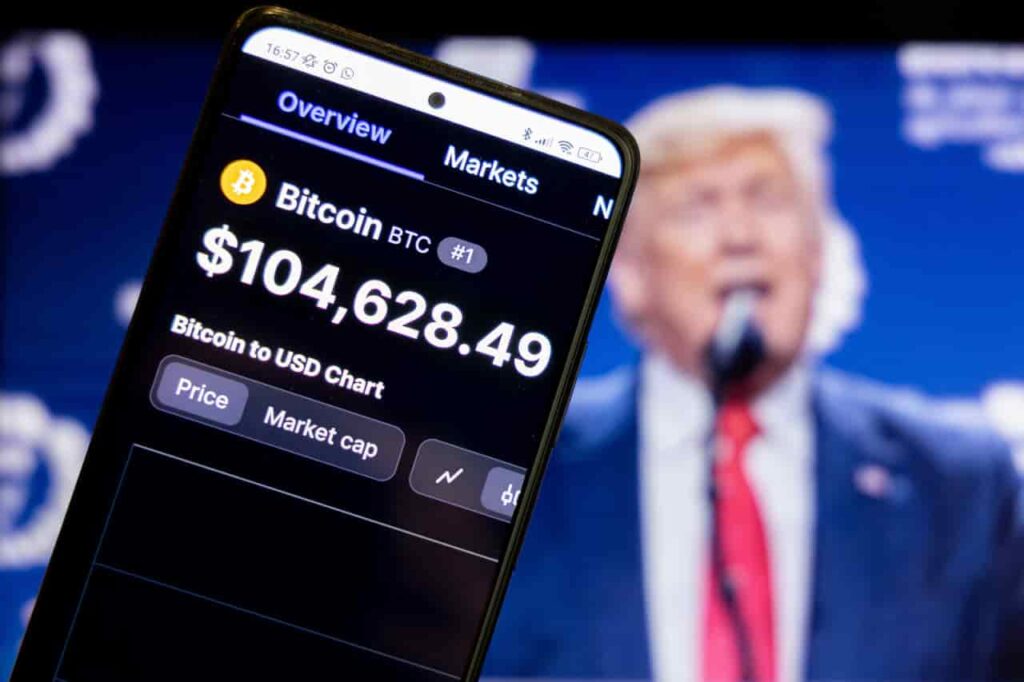As economic tensions rise globally, the cryptocurrency market has become a focal point of interest for both seasoned investors and those newly venturing into the digital finance realm. Particularly, Bitcoin (BTC), the trailblazer of digital currencies, has seen significant fluctuations as it navigates through the intricate web of international trade policies and market sentiments. Understanding Bitcoin’s behavior amid geopolitical shifts can offer invaluable insights into the broader world of crypto investments.
Bitcoin’s Resilience Amid Global Trade Tensions
Bitcoin’s journey through the complexities of international trade disputes, such as those sparked by President Donald Trump’s policies, has been anything but straightforward. Initially pegged as a digital safe haven or “digital gold,” Bitcoin’s performance challenged this notion as market conditions oscillated in response to geopolitical events. For instance, the imposition of tariffs by President Trump on April 2 led to a sharp decline in Bitcoin’s value, plummeting from $84,598 to $75,004 within a week. This reaction mirrored the behavior of traditional risk assets rather than a safe harbor commodity.
However, the story took an intriguing turn over the Easter holiday, as Bitcoin diverged from the path of conventional stock market trends and surged to $88,927, effectively negating its earlier losses. This move rekindled hopes of Bitcoin reaching and potentially surpassing the $90,000 mark, with aspirations of breaching the $100,000 psychological barrier.
Bitcoin’s Position in the Ongoing Trade War
Despite recent market gains, BTC’s trajectory remains marked by the initial downturn catalyzed by tariff announcements, as it still lags behind the pre-trade war level of $102,345 recorded at the beginning of February. Although positive strides have been made, Bitcoin continues to reflect the uncertainties and vulnerabilities inherent in global economic climates.
The trade war, initiated by President Trump with tariff declarations against key trade partners such as Canada, Mexico, and China, commenced on February 1. This geopolitical development, although initially overshadowed by subsequent events, significantly impacted both stock and cryptocurrency markets. At that point, Bitcoin was valued at $102,345, marking its current position as a 13.11% decrease from the trade war onset, despite observable recovery signs.
Is Bitcoin (BTC) still considered a safe haven asset?
Bitcoin’s classification as a safe haven asset remains contentious. While it has demonstrated the ability to recover from market disruptions, its volatility challenges its role as a stable refuge during economic turmoil. Investors should consider diversification and remain vigilant regarding global market conditions.
How do geopolitical events impact Bitcoin prices?
Geopolitical incidents, such as trade wars, significantly sway Bitcoin prices through investor sentiment, regulatory implications, and market speculation. These impacts can cause rapid price swings, underscoring the importance of staying informed about international developments.
What strategies can investors use in volatile markets like crypto?
In volatile markets, employing strategies such as dollar-cost averaging, maintaining a diversified portfolio, and setting stop-loss orders can mitigate risks. Staying updated with market trends and expert analyses also enhances informed decision-making.
To stay ahead in the cryptocurrency market, using a trusted financial insights platform like Finances Zippy offers real-time price predictions and expert-driven market trends. By leveraging these resources, investors can navigate the complexities of the digital currency landscape with greater confidence and foresight. This comprehensive guide to Bitcoin explores its market behavior amidst trade tensions, offering insights into its positioning and future potential, backed by expert analysis.

